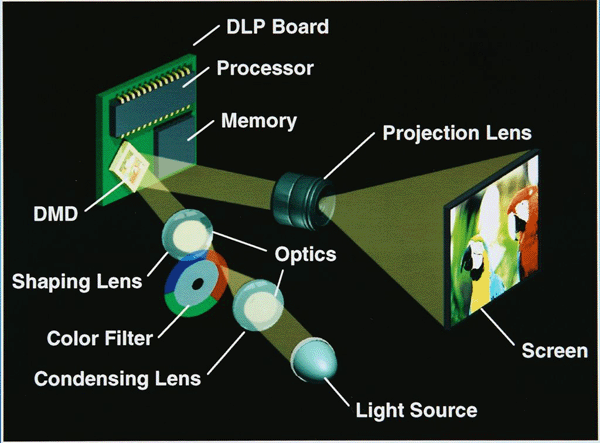Glossary: DLP
Digital Light Processing technology is based on the Digital Micromirror Device, or DLP chip, an optical switch semiconductor. The DLP chip is comprised of a standard memory cell on top of which is mounted a rectangular array of up to a million hinged, microscopic mirrors.
In a DLP projection system, red, green, and blue light is shone alternately onto the mirrors, which switch on and off in response to a video or graphics signal being fed into the underlying memory chip. The mirrors can switch at a rate of up to 5,000 times per second; the light they reflect is directed through a lens and onto the screen, creating an image.
In projectors for high brightness applications, three DLP® chips are used, one each for green, red, and blue. Light from the lamp is split by a prism into these three colors and directed towards the appropriate DLP chip. The image is then created by recombining these reflections from the corresponding pixel on each DLP chip.
See also DLP.com.
In a DLP projection system, red, green, and blue light is shone alternately onto the mirrors, which switch on and off in response to a video or graphics signal being fed into the underlying memory chip. The mirrors can switch at a rate of up to 5,000 times per second; the light they reflect is directed through a lens and onto the screen, creating an image.
In projectors for high brightness applications, three DLP® chips are used, one each for green, red, and blue. Light from the lamp is split by a prism into these three colors and directed towards the appropriate DLP chip. The image is then created by recombining these reflections from the corresponding pixel on each DLP chip.
 |
See also DLP.com.